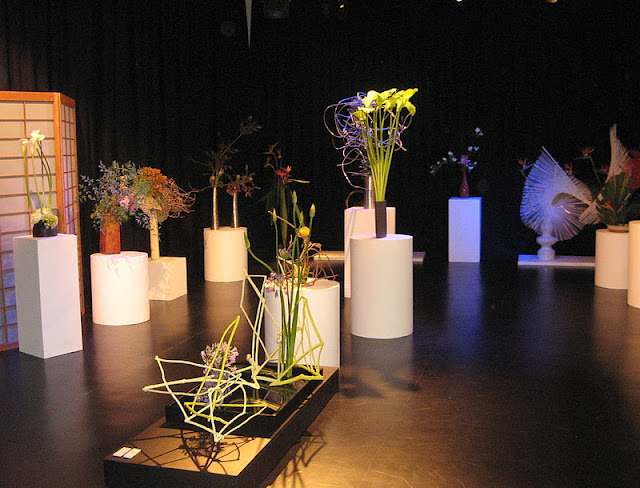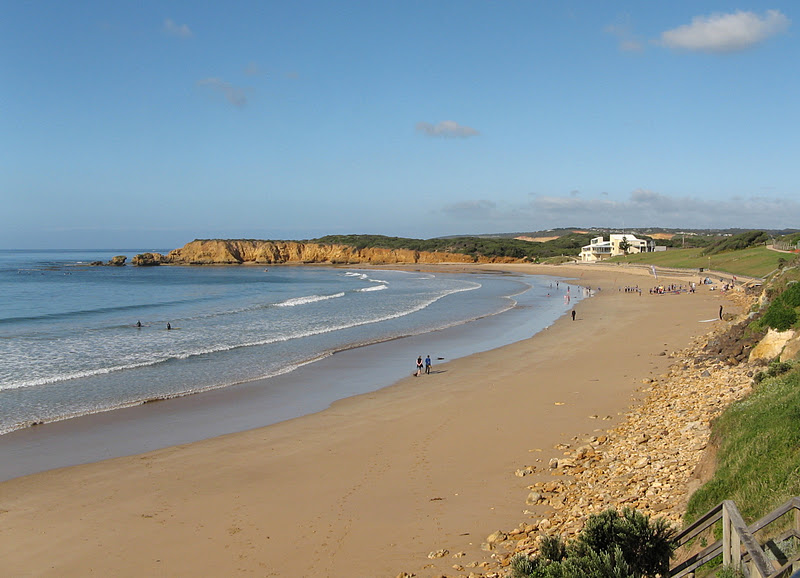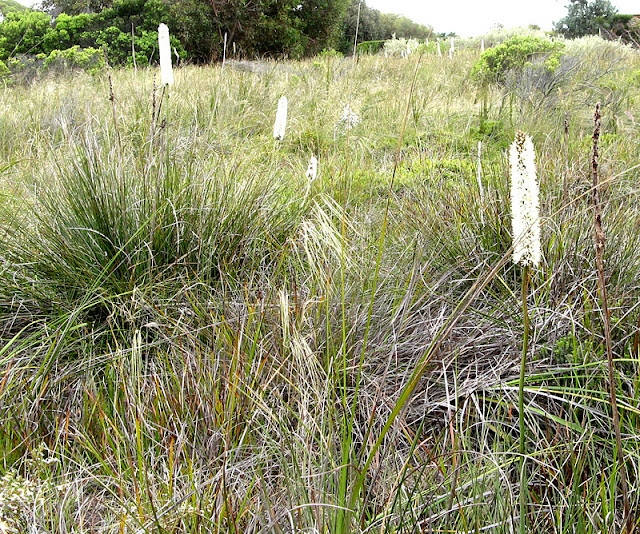Last week I said I would show some other works from the Sogetsu School Victorian Branch Exhibition in the Kew Courthouse. I am only able to give a small sample of the work because not all of my photographs came out well enough. This eye-catching sculpture of teak branches and air-conditioning aluminium foil stood on the footpath as a marker of the exhibition. I was fascinated at the way the foil has a texture like fabric and it seemed I could feel a hand smoothing its' surface. It was created by Joan Norbury.
This large vessel, by Denis May, was flowing over with red and yellow Leucospermum, pinwheel flowers. It was created by Joy Manie.
Jennie Stuart has chosen warm orangy tones in this lily and section of a palm leaf to complement the colours in this unusual hand made basket. She has contrasted these natural textures with some rusty springs. The basket was made by Maree Brown from palm inflorescence.
Sandra Gawthorpe made this nageire work using some very unusual eucalyptus seed pods she brought back from South Australia recently.
Kath Dacy and Joan Norbury created this collaborative work with painted branches in a shallow black vessel with agapanthus. It seem to me to make reference to the variation number five in the Sogetsu curriculum.
The same work from the opposite viewing angle.
This large work was made by Toula and Betty Karanikolopoulos using Strelitizia and two match-stick bamboo blinds.
On last Wednesday I travelled to Brisbane to give a presentation about my three months in Japan earlier in the year. While walking into the city I noticed this Brachychiton Acerifolia in flower. It is an Australian native of the east coast rain-forests of New South Wales and Queensland. At this time of year it may be covered in small cup shaped rich red flowers.
The trees some-times have no leaves and the visual impact is great because the new branchlets that hold the flowers are also red.
Here is a close-up of some fallen flowers.
Greetings,
Christopher
27th November 2011








































